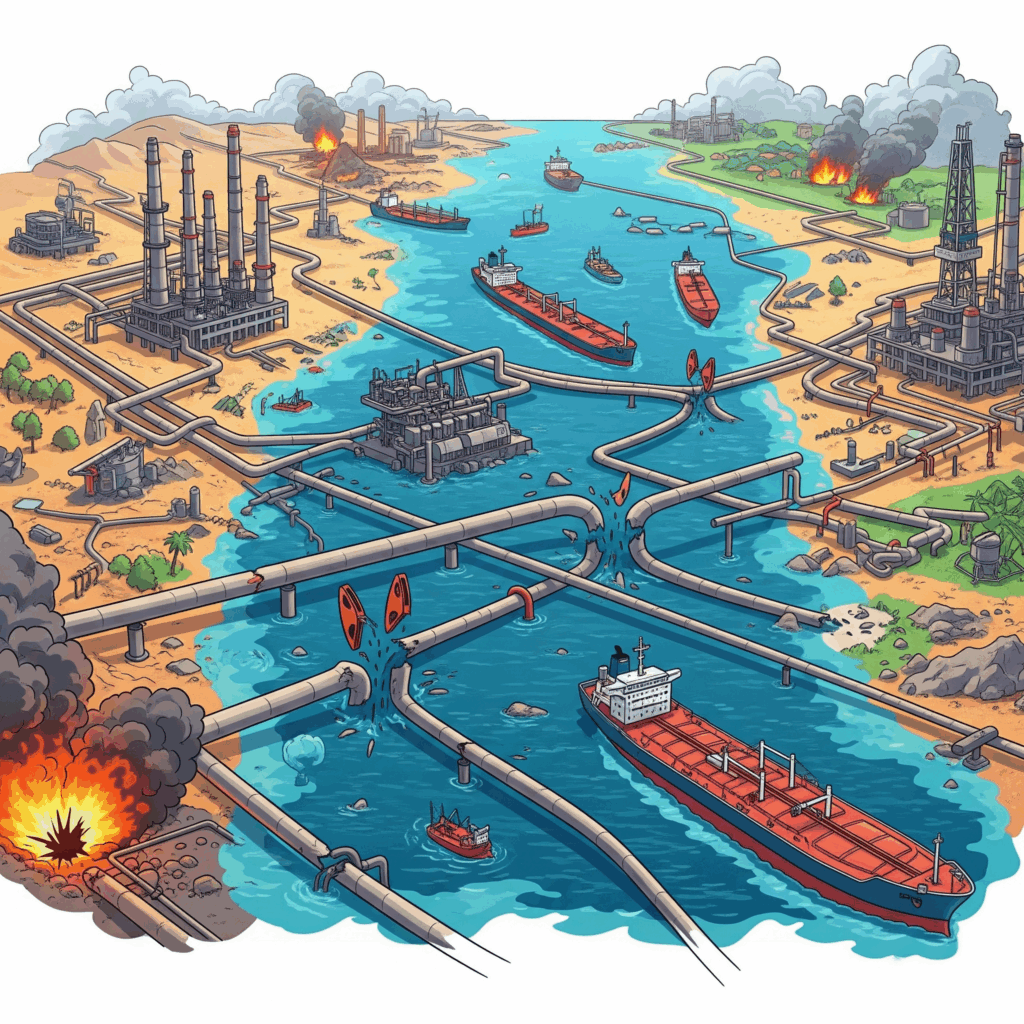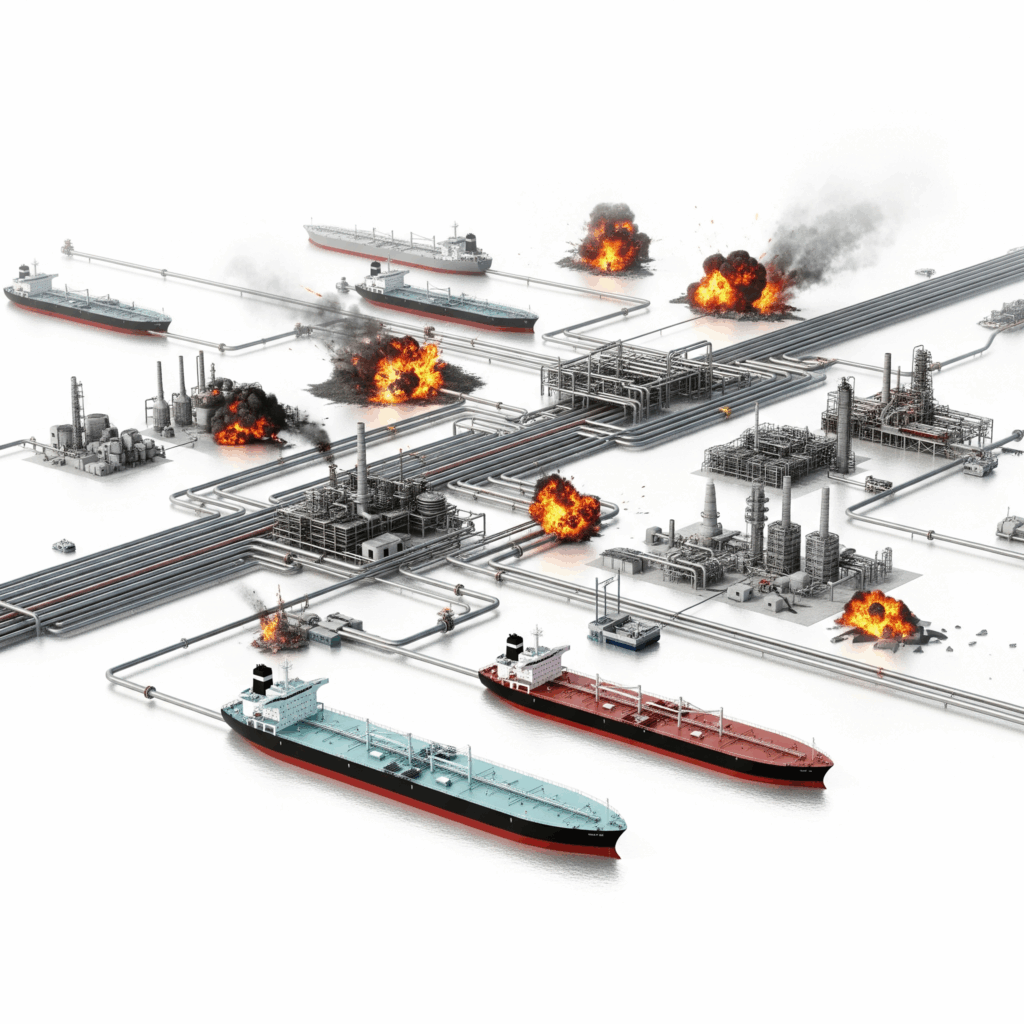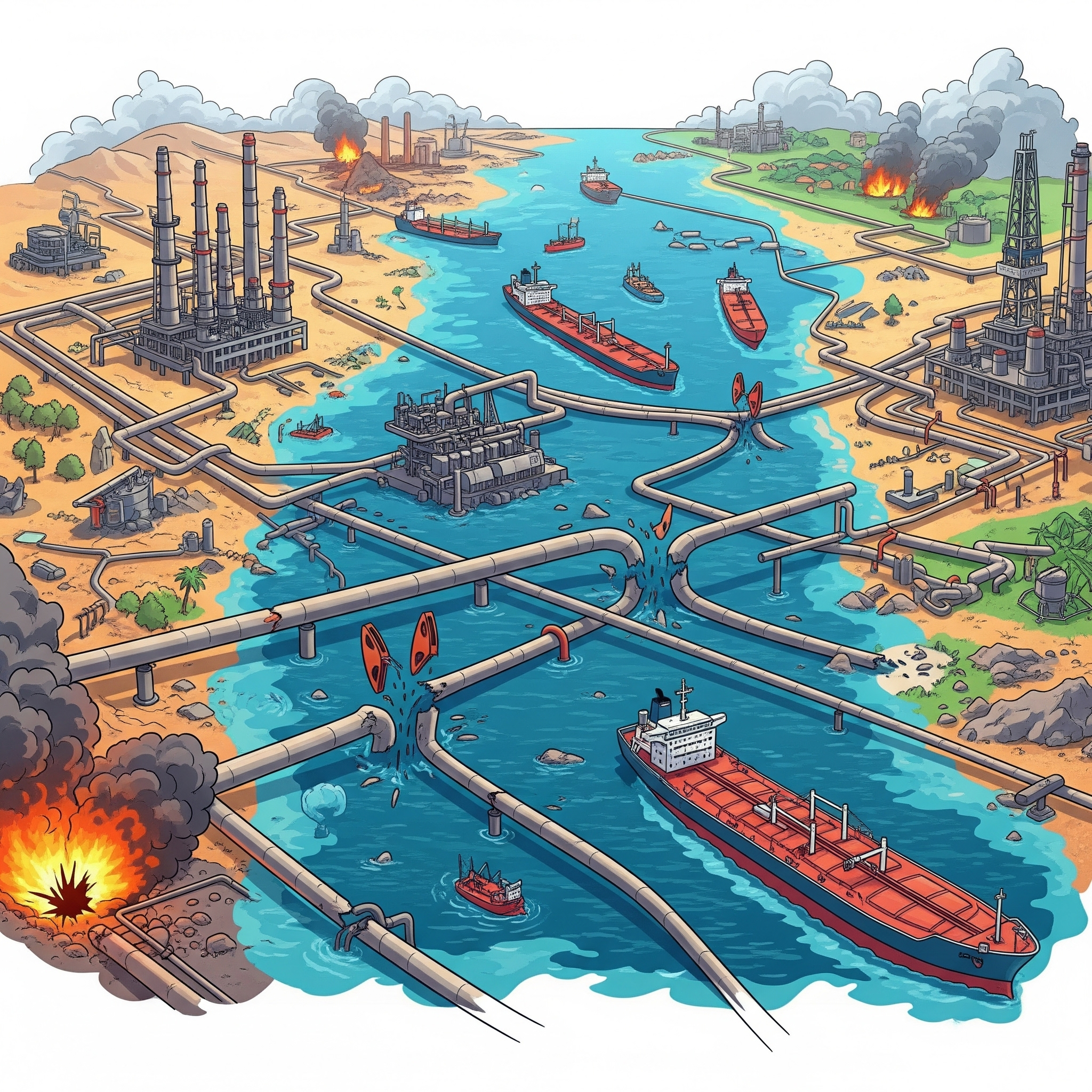Will the Israel–Iran Conflict Disrupt Global Oil Supply Chains?
- 331 Views
- admin
- June 16, 2025
- World News Economics

The intensifying conflict between Israel and Iran has triggered deep concerns in the global oil markets. As tensions escalate in one of the world’s most geopolitically sensitive regions, the potential for major disruptions to oil supply chains is growing. With crude prices already reacting to military developments, analysts and investors are reevaluating their oil price forecasts, considering both immediate risks and long-term implications.
The Geopolitical Flashpoint: Strait of Hormuz
At the center of this crisis lies the Strait of Hormuz, a narrow passage through which roughly 20% of the world’s seaborne oil supply flows. Any disruption here could send shockwaves across global energy markets. Iran has long threatened to block this strategic chokepoint in the event of direct confrontation, and with rising hostilities, that threat feels more credible than ever.
Military actions in the area have raised red flags about the vulnerability of tanker routes. Even limited disruptions—such as harassment of commercial vessels or drone attacks—can increase transit risks and insurance premiums, leading to higher shipping costs and delayed deliveries.
Oil Price Forecasts Under Pressure
The growing instability has put a spotlight on the oil price forecast models used by major institutions. In the days following the recent missile exchanges, Brent crude briefly surged above $85 per barrel before settling slightly lower. Analysts now warn that if the conflict intensifies or expands to other key oil-producing countries, prices could spike toward the $100–$120 range.
Even in a best-case scenario—where direct attacks on infrastructure are avoided—markets are expected to remain volatile. Short-term price swings are likely as traders respond to political headlines, military actions, and diplomatic developments.
For nations heavily reliant on oil imports, such as India, China, and many EU countries, the unpredictability presents serious economic challenges.
Middle East Oil Crisis: Is It Already Here?
While the situation hasn’t yet triggered a full-scale Middle East oil crisis, the groundwork is being laid. Any incident involving Iranian oil fields, Israeli refineries, or Gulf transport routes could act as a catalyst.
Investors are already pricing in a “risk premium” for oil sourced from the region. Some producers are ramping up security, while others are exploring alternative export routes—though these often involve higher operational costs and longer delivery times.
Meanwhile, Saudi Arabia, the UAE, and Iraq are under pressure to ensure stable output and reassure markets. OPEC’s response in the coming weeks could play a key role in determining whether prices stabilize or climb further.

Energy Trading Platforms See Surging Volumes
As uncertainty grips physical markets, energy trading platforms are experiencing a surge in activity. Institutional investors and hedge funds are increasingly turning to futures and options to hedge against extreme price movements.
Platforms specializing in commodities trading have reported record volumes in crude oil contracts, reflecting the heightened demand for risk management tools. Algorithmic trading systems are also adjusting their models to incorporate new geopolitical risk metrics, further increasing market sensitivity to conflict-related news.
In this environment, having the right trading infrastructure is becoming a competitive advantage. From real-time analytics to automated alerts on regional instability, trading firms are upgrading their systems to react faster than ever.
Potential Scenarios Ahead
Three primary scenarios are being discussed in energy and financial circles:
- Limited Conflict: A short-term escalation with no lasting damage to infrastructure. Oil prices remain volatile but contained within the $80–$90 range.
- Extended Confrontation: The conflict persists and starts affecting production or transit routes. Brent could rise above $100 per barrel.
- Severe Disruption: A closure of the Strait of Hormuz or widespread infrastructure damage. This would be the worst-case scenario, potentially sending prices to $120+ and triggering a global energy crisis.
The direction of this crisis will depend not only on military decisions but also on diplomatic efforts, particularly those involving the United States, European Union, and regional players like Qatar and Oman.
Conclusion
The Israel–Iran conflict has brought a dangerous level of uncertainty to global oil markets. With the Strait of Hormuz at risk, energy supply chains are under threat, and oil price forecasts are being revised upward. Investors and governments must stay alert, leveraging energy trading platforms and strategic reserves to navigate this volatile landscape.
While no one can predict the exact outcome, what is clear is that the stability of the Middle East remains a critical pillar of global energy security. Any prolonged disruption here won’t just shake commodity prices—it could redefine the economics of energy for years to come.
